Estimated reading time: 9 minutes

Under the City of Light and its sparkling Eiffel Tower, there is a cold, dark place filled with thousands upon thousands of (real!) human skeletons 💀. Skulls are neatly stacked, some arranged to form a heart, and femoral bones are piled on top of each other to create artful columns. A route spanning 1.5 kilometers (1 mi) long is open to the public, welcoming you with cool indifference 🌬️. This is the Catacombs of Paris.
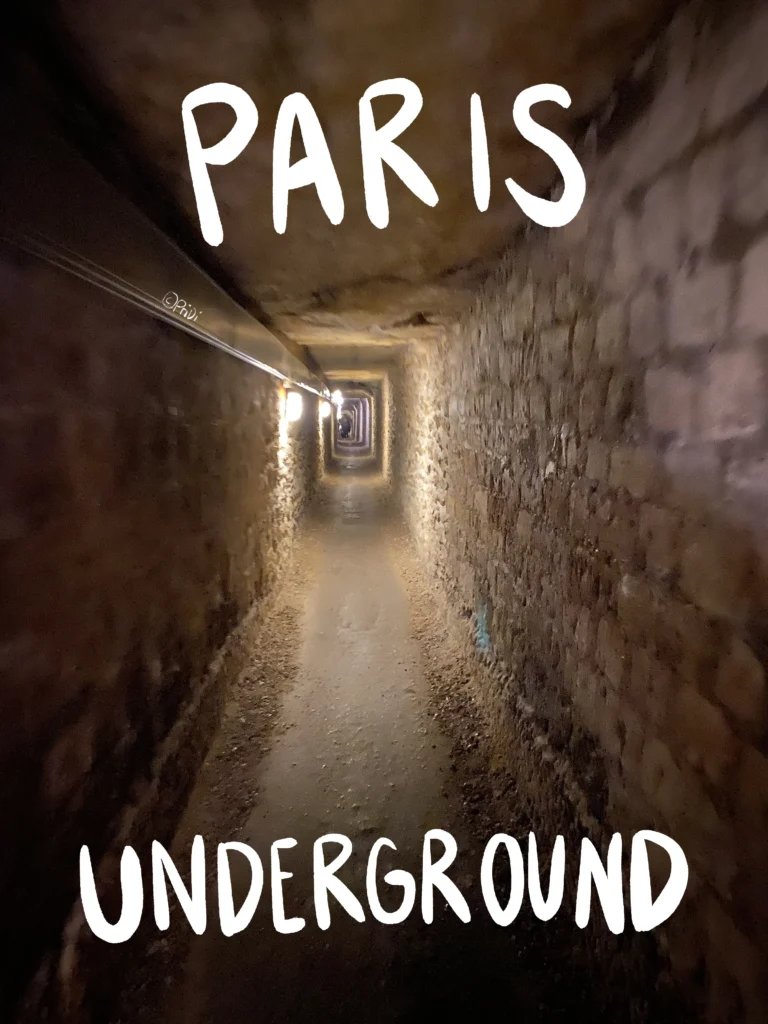
This is the view you’ll be facing when you decide to venture down 20 meters deep underground to the Catacombs of Paris, an ossuary built to contain the overflowing remains of 6 million long-dead Parisians. I had the chance to visit the Catacombs this year, and it was a remarkable sight for sure. I went down 131 steps of stairs to reach the bottom, and 112 steps to come back up into street level. A little cautionary warning, the walkway was quite narrow and the ground was uneven. I also had to step over some patches of wet ground.
Watch my YouTube video on the history of the Parisian Catacombs!
Table of contents
Why visit the Catacombs?
Personally, I’ve always been fascinated by historical tales- especially morbid ones! The history was really captivating to me, and although visiting the place takes a lot of planning, it was worth it.
A little French history ☠️
Built in the late 18th century, the Paris Catacombs ossuary was a solution to an overflow of dead bodies in the city of Paris. Burials of former Parisians had been taking place in the city since the Middle Ages, and the living need some space to-well, live! The overflowing cemeteries got worse and worse until they had to find an alternative.
It got so bad at one point that the bodies broke into a poor guy’s cellar in the late 1700s. Could you imagine going into your basement and seeing a bunch of rotting bodies breaking through the walls? 😱 Talk about traumatic!
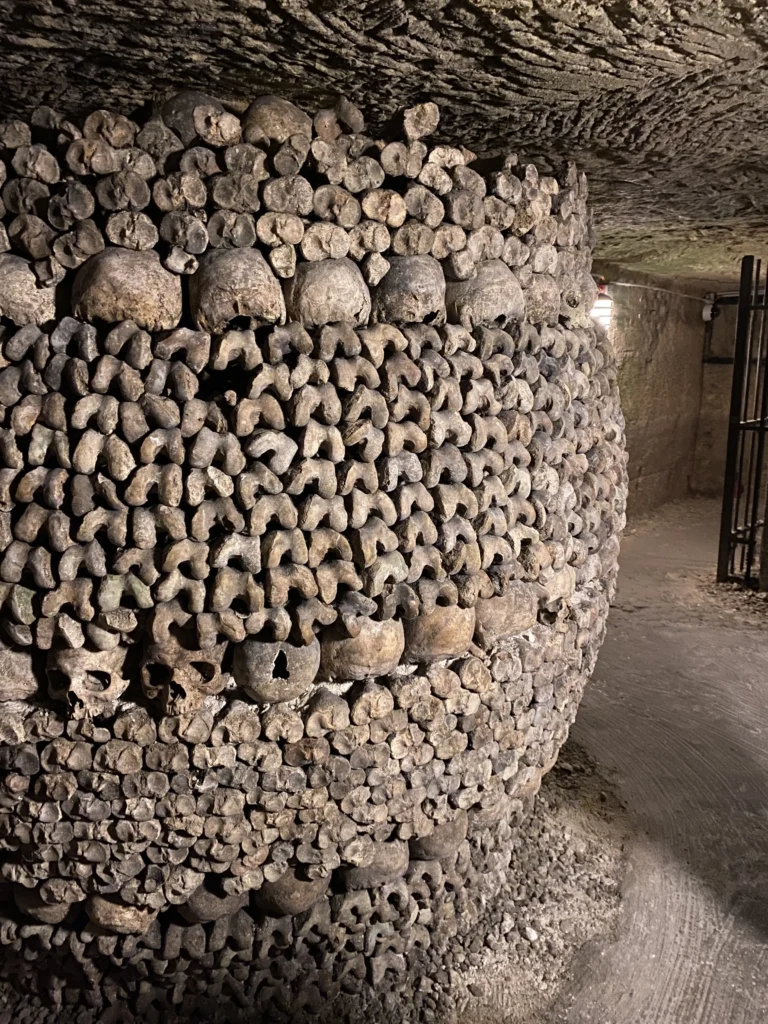
Other Parisians living near the cemetery were not faring so well either, it was reported that food and wine at houses near the cemeteries went bad in just a few hours after opening or cooking. The concentration of bacteria near these places were astounding! The public got more and more restless (I would be pissed too, if my good wine went bad so fast), and the city had to do something about it.
In comes Lieutenant General Lenoir, who was tasked to create the municipal ossuary, was actually the head of the police. He chose to create the ossuary in the abandoned mines under the streets of Paris.
There were limestone quarries that had long since been disused, and the Lieutenant organized a workforce to move human remains from Cimetière des Innocents to their new home. Also known as Cemetery of the Holy Innocents, it was the largest cemetery at the time.
The bones were rounded up and moved in 1809, and this project continued to empty more cemeteries and mass graves (like from the Trinité Hospital) from back in the day.
Getting Creative with the Decor
The part we call the catacombs of Paris is actually only a small section of these vast 300-km long underground tunnels. Once the bones were relocated into the catacombs, it wasn’t actually opened to the general public. The nobility, however, got intrigued and they also got special access and connections. Charles X went there (he was still Count of Artois at the time), the Austrian emperor Francois I went there, and eventually it was opened to the public in 1809.
Louis-Etienne Héricart de Thury, the inspector at that time, instructed his men to arrange the bones into various shapes. They moved it from plain ol’ heaps of bones into circles, columns, and even a heart. At this time, they also created signs and plaques to commemorate which cemeteries they got transferred from. Honestly, what a good idea- I think he’s a marketing genius!
These days, the tourists that go into this final resting place will for sure take a picture with these artful arrangements. Even young children came in without an ounce of fear.
How do I enter the place? Do I have to make a reservation?
Yes you do! There’s a limit for the number of tickets, so please make an advance reservation. I reserved my ticket and audioguide with Get Your Guide* at around 2 months in advance, and I am glad I did so because the tickets for the day were all sold out when I arrived!
You can also choose a restricted area guided tour with English-speaking tour guides, which can take you to the off limits areas not open to the general public.
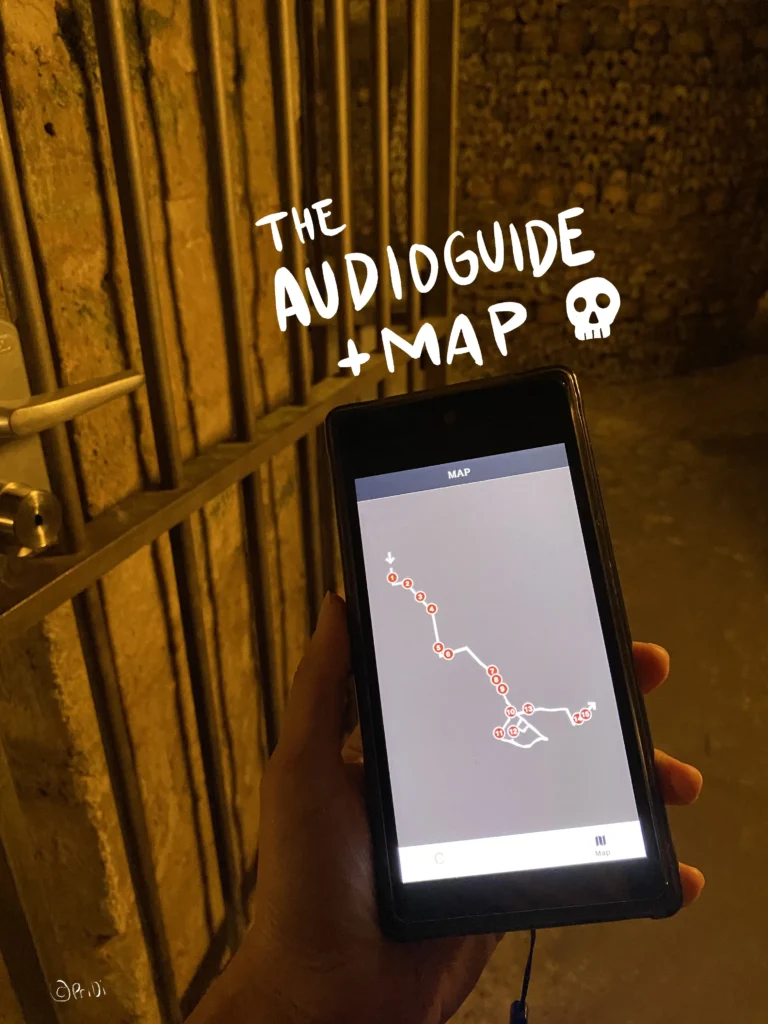
Only 200 visitors can visit the Catacombs at each timeslot, so it is a common occurrence to see a “Sold out” at the front of the gates. Some curious visitors had to be turned away because of overcapacity. I had to show my reservation at the entrance to be able to enter. The process was smooth and down I went into the Gates of Hell.
What is down there?
After going down a long spiral staircase, you are deep inside the heart of underground Paris. You will see A LOT of real human bones and plenty of history. The first sight you see once you get through the tunnels at the beginning is this gate showing “Stop! This is the empire of death”.
It is quite showy, as the ossuary was not meant to welcome general visitors. Back then, though, only the nobles could come in for the experience.

Then, not far from this gate, you will find this beautifully macabre arrangement, with skeletons of Parisians of the past forming a heart.

Follow the route shown on the audioguide. Don’t worry, you cannot get lost as the rest of the passages are locked for regular visitors. These underground galleries goes all across southern Paris (~300 km in length, isn’t it nuts?!), with some parts filled with water! Some adventurous urban explorers have had parties and swam around these tunnels 😱
Urban Explorations and Cataphiles
I also fell into a rabbit hole of the Catacombs’ urban exploration. Plenty of these explorers had come down and mapped the multiple routes. Read Gakuranman’s Catacombs series and you’ll find (creepy) modern art installations 💀, galleries that display paintings from graduates of the Mines ParisTech university, and even Nazi bunkers!
I’d have to say, these Cataphiles are immensely creative! It takes courage to explore the dark depths of the catacombs. There have been deaths down here as well, the most famous one being Philibert Aspairt in 1793. It was not until ELEVEN years later that someone discovered his remains.
The Samaritan Fountain
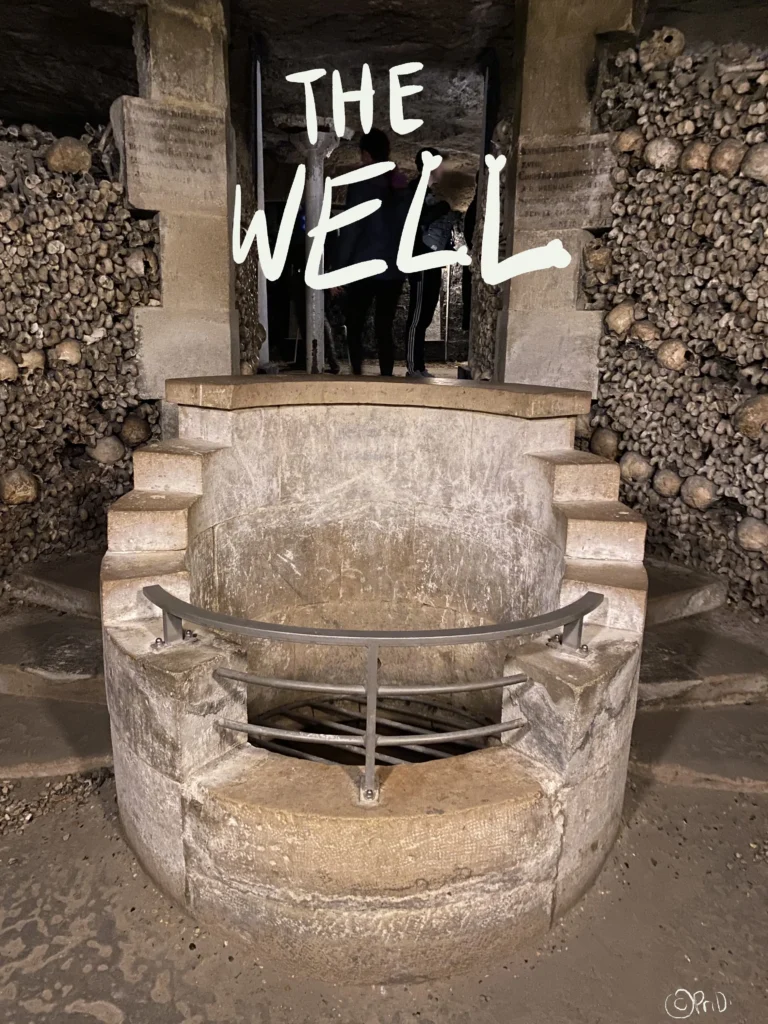
One of the sights you will see in the route is the Samaritan Fountain. Workers made mortar with water from this underground well. A man of science, the same Monsieur Héricart du Thury, also performed a scientific experiment here; he wanted to see if goldfishes could survive!
Spoiler: they did, but they became sterile and blind. I guess they are meant for the aboveground afterall. 🐠
Where is the Catacombs and how do I get there?
The entrance is located at 1, avenue du Colonel Henri Rol-Tanguy (place Denfert-Rochereau), 75014 Paris. You need to reach the Denfert-Rochereau Métro station before your booking time, and line up at the entrance. Please note that you cannot bring in bags over 40 x 30 cm and there are no lockers for your items.
You can visit the gift shop after your trip through this veritable labyrinth. The gift shop does not require reservations, and they offer plenty of interesting morbid items.
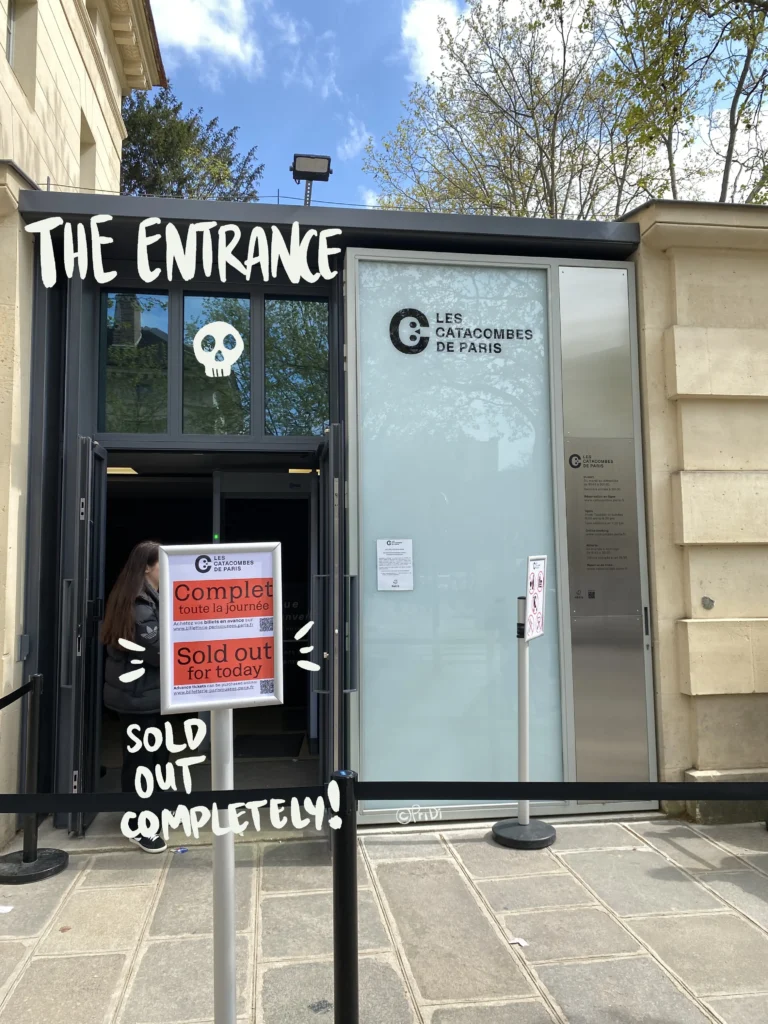
When is the Catacombs open?
According to the Catacombs of Paris’ official website:
Monday – Sunday from 9.45 am to 8.30 pm, with the last entrance allowed at 7.30 pm. People usually take around 1 hour to explore.
What should I wear?
The Catacombs of Paris has a 14 degree Celsius average temperature, so dress accordingly. Bring a jacket and wear comfortable walking shoes with good grip, since the Catacombs’ grounds can be wet and slippery.
*This is an affiliate link
P.S. = If you are looking for a cultural experience at the Louvre afterwards or just nice restaurants to visit in Paris, feel free to explore! If you dark tourists would like to check out the Père Lachaise cemetery, read this interesting article.

Pin It!

